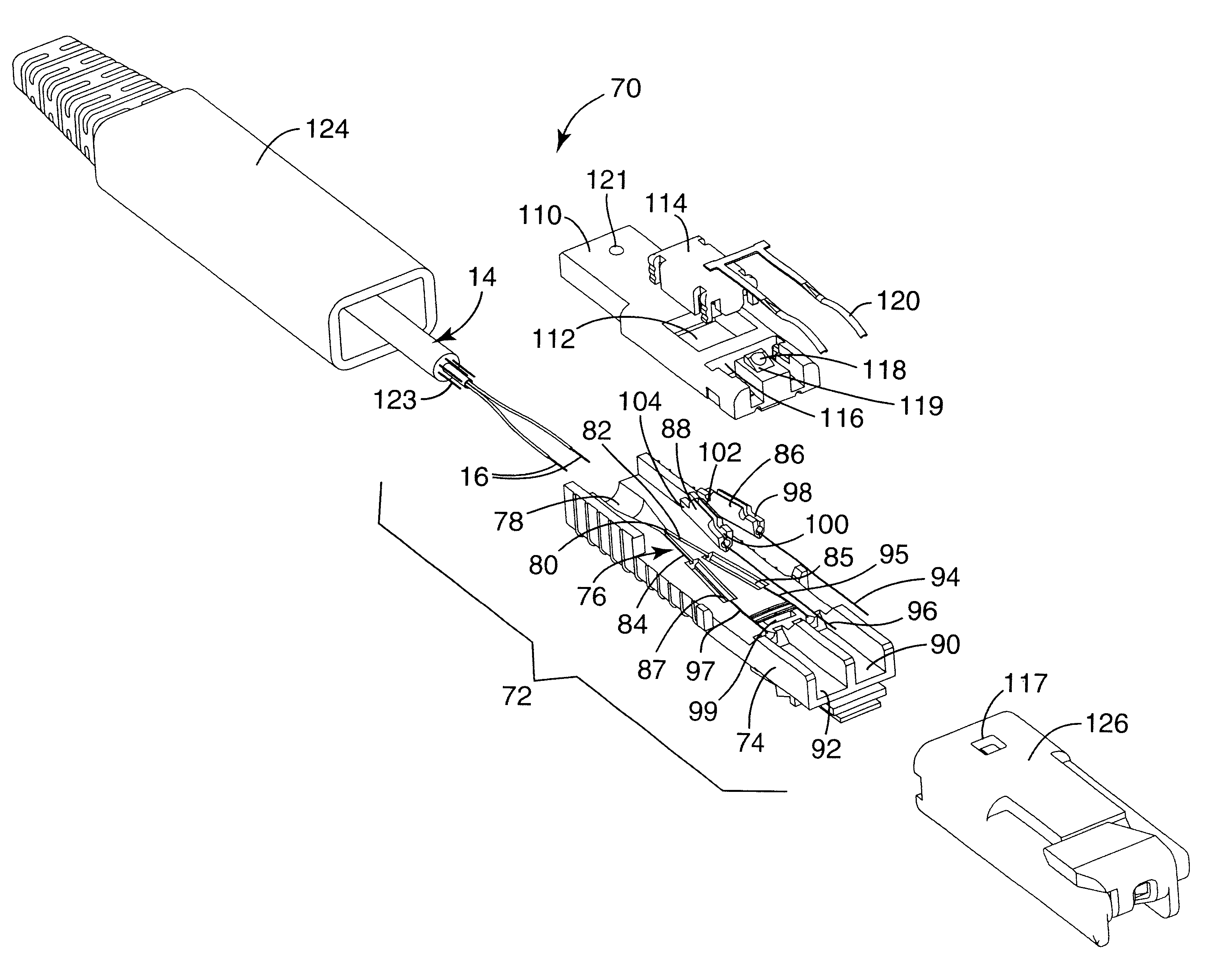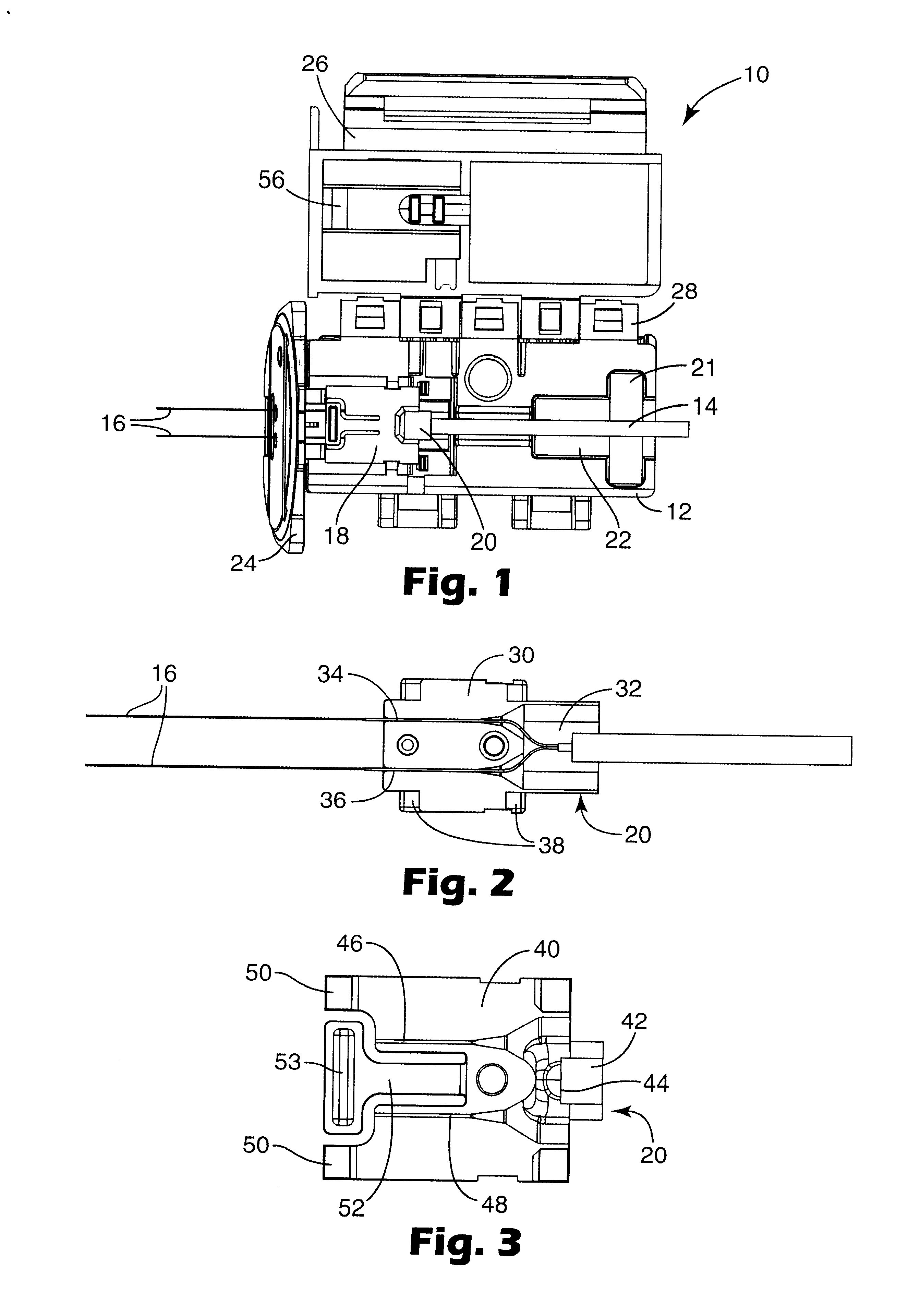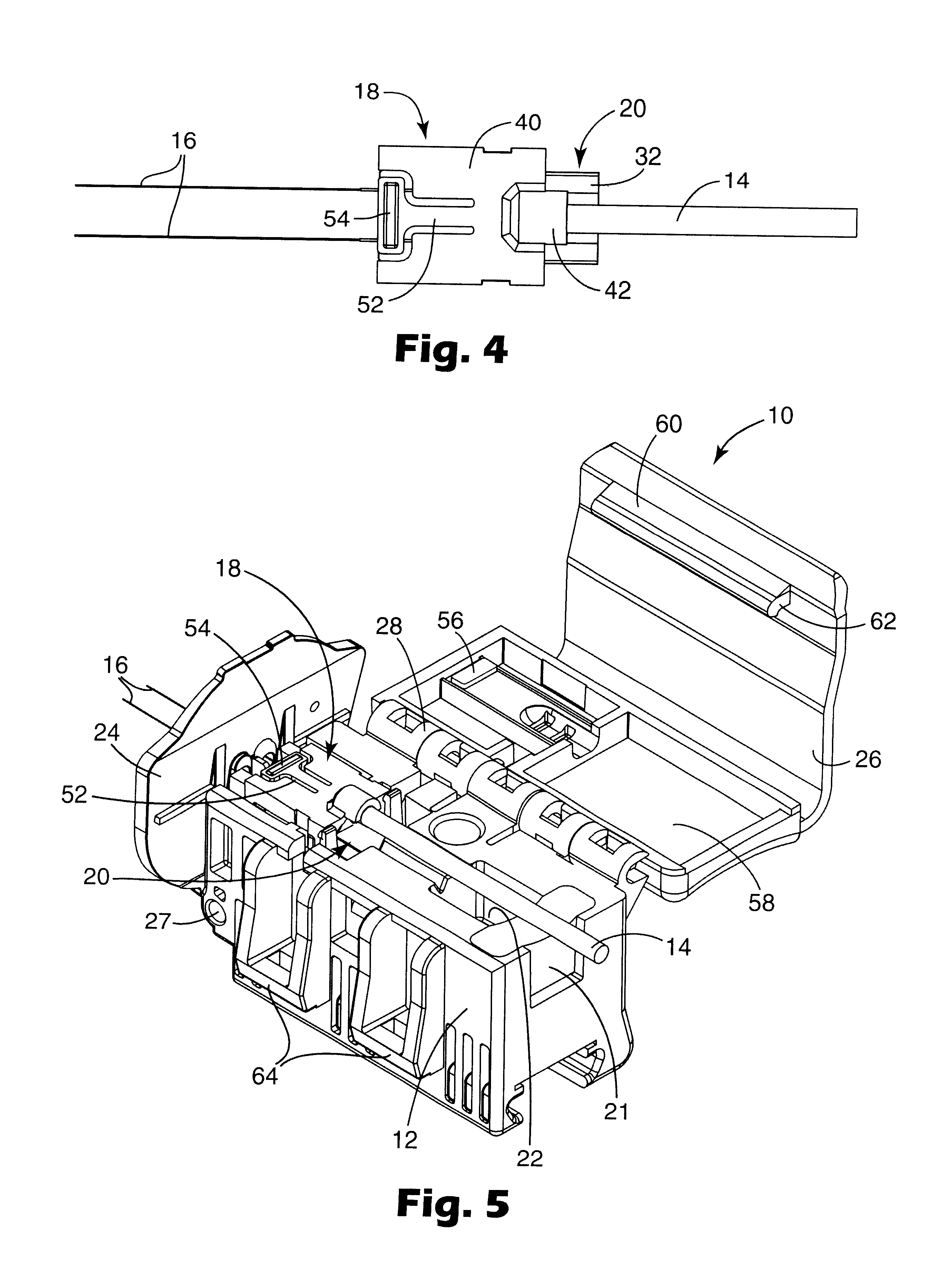Optical fiber plug
- Summary
- Abstract
- Description
- Claims
- Application Information
AI Technical Summary
Benefits of technology
Problems solved by technology
Method used
Image
Examples
second embodiment
FIG. 9 provides an exploded perspective view of an optical fiber connector plug 270 according to the present invention including a molded connecting portion 272 that includes additional features to further increase the probability of optimal field assembly of a connector plug 270 according to the present invention. A connecting portion 272 comprises a fiber containment body 274 including a structured floor 276. The structured floor 276 has essentially the same features as the previously described structured floor 76 including a rear entry 78, extending to a junction 80 of a first fiber groove 82 and a second fiber groove 84 and first 86 and second 88 crimp elements. In addition to these features, the fiber containment body 274 further includes a tapered wall 277, molded into the floor 276 between the first fiber groove 82 and the second fiber groove 84, to prevent crossover of optical fibers 16, thereby directing them towards the correct crimp elements 86, 88 for maintaining optical...
third embodiment
FIG. 14 provides an exploded perspective view of an optical fiber connector plug 370 suitable for field installation in situations where termination of an optical fiber cable 14 does not require installer dexterity associated with feeding stripped terminal portions of optical fibers 16 into channels 82, 84 or a slot 278 formed in pre-assembled connecting portions 72, 272 described previously. Instead, an installer has the option of field terminating one or more optical fibers 16 by applying a permanent fiber positioner 380 that may be used with a polishing puck 10 in place of the demountable, temporary optical fiber holder 18 described above. A permanent fiber positioner 380 includes a base-plate 330 connected to a cover-plate 340 in such a way that the positioner 380 is difficult to re-open after preparing the cable 14, to remove sheath and buffer layers and inserting the terminal portions of optical fibers 16 through channels in the positioner 380 and openings in the puck guide pl...
PUM
 Login to View More
Login to View More Abstract
Description
Claims
Application Information
 Login to View More
Login to View More - R&D
- Intellectual Property
- Life Sciences
- Materials
- Tech Scout
- Unparalleled Data Quality
- Higher Quality Content
- 60% Fewer Hallucinations
Browse by: Latest US Patents, China's latest patents, Technical Efficacy Thesaurus, Application Domain, Technology Topic, Popular Technical Reports.
© 2025 PatSnap. All rights reserved.Legal|Privacy policy|Modern Slavery Act Transparency Statement|Sitemap|About US| Contact US: help@patsnap.com



